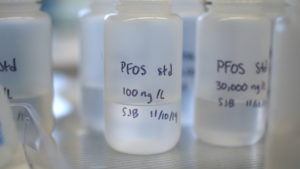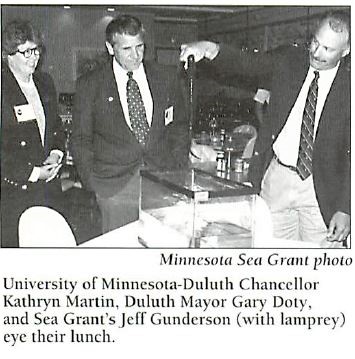Ancient stone patterns in Straits of Mackinac add new wrinkle to Line 5 pipeline debate

MACKINAW CITY, Mich. (AP) — Images from an underwater vehicle seem to reveal stone patterns on the bottom of the Straits of Mackinac in northern Michigan, possible evidence of Native American artifacts from thousands of years ago, a newspaper reported.
A group of amateur explorers raised money to look at Enbridge Inc.’s oil pipeline on the lake bottom.
Great Lakes Now
https://www.greatlakesnow.org/2020/10/ap-ancient-stone-patterns-straits-mackinac-line-5-pipeline/




 The Portuguese professor had given me several traditional sea lamprey recipes, at least one of which involved using lamprey blood. Ewww. Anyway, I showed these to Chef Bennett, and we came up with a taste-test plan. He would prepare two traditional recipes and create two of his own. Gunderson talked the original Lou of Lou’s Fish House in Two Harbors into smoking some lamprey for the taste test, as well.
The Portuguese professor had given me several traditional sea lamprey recipes, at least one of which involved using lamprey blood. Ewww. Anyway, I showed these to Chef Bennett, and we came up with a taste-test plan. He would prepare two traditional recipes and create two of his own. Gunderson talked the original Lou of Lou’s Fish House in Two Harbors into smoking some lamprey for the taste test, as well. The highest rated dish was Bennett’s own lamprey stew with garlic mashed potatoes, rated 4.5 out of a possible 5. The smoked lamprey came in second, earning 3.7 out of 5. The taste of the lamprey came out more strongly in the traditional dishes, which did not suit these American taste-testers.
The highest rated dish was Bennett’s own lamprey stew with garlic mashed potatoes, rated 4.5 out of a possible 5. The smoked lamprey came in second, earning 3.7 out of 5. The taste of the lamprey came out more strongly in the traditional dishes, which did not suit these American taste-testers.







 Thermo Fisher Scientific
Thermo Fisher Scientific 
